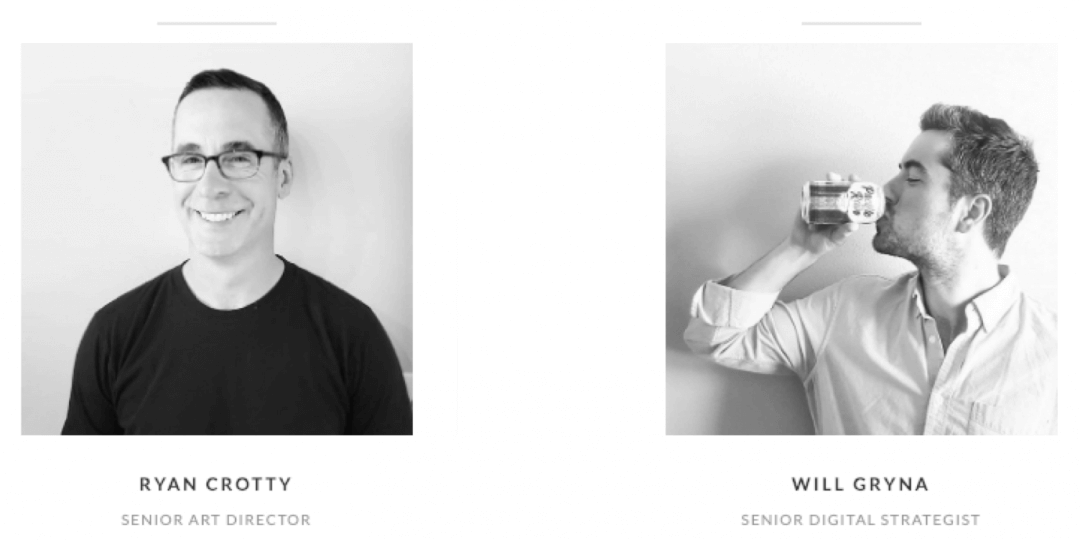-
DVA plans move to Bend’s Central District
- Aug 24, 2021
- By Troy Kerr
- In MORE GREAT WORDS
The Bend Bulletin recently broke news that we’ve been sitting on for a while… but now that the secret is out, I guess we’re ready to share with everyone! After 30-plus years of doing business in downtown Bend, DVA Advertising & Public Relations will be moving its offices to the Bend Central District.
DVA plans a two-story building on 221 NE Hawthorne Ave., said Justin Yax, partner/public relations director for DVA Advertising & Public Relations. A fire in late July at the building on the corner of Greenwood Avenue and Hill Street pushed the deadline up a bit to move to the new location in the heart of the central business district.
The new location will be completed by March, Yax said.
“Our decision to build in the central district was mostly related to the city and the community vision for that space,” Yax said. “We were told that the city was using the Pearl District in Portland as the model.
“That was appealing to us.”
The Bend Central District — an area roughly bounded by Fourth Street, the Bend Parkway, Revere Avenue and the Third Street underpass — is one of the four opportunity areas that were recently included in the new Urban Renewal/Tax Increment Financing area.
“Our vision is this is an opportunity for the Third Street commercial strip to transition to a mixed use area,” said Allison Platt, Bend Core Area project manager. “The intent is for higher density, intense land use, higher buildings that mirrors the downtown.”
That means the area will embrace taller buildings, rather than sprawled out one-story buildings, and a mixture of business and residential uses.
DVA is not the first businesses to build in the area. Other businesses including Sunlight Solar Energy and Brooks Resources Corp. have relocated to the central district.
“The goal is for the core to house more of our residential needs,” Platt said. “We want to put more people in walkable and bike-able areas of the city. We’ve been focusing on this for the past six years.
“This area will gradually transition to an urban feel and be a place where people can live, work, play in the center of the city. There’s a lot of activity in the area.”
Brooks Resources is considering building a 130-unit housing development with mixed use in the area, Platt said.
By creating a special district, the city can stimulate development by offering tax increment financing through its urban renewal plan.
“We’re trying to be intentional about development,” Platt said. “This is different than tax incentives. It subsidizes companies by refunding or diverting a portion of their taxes to help finance development in an area.”
The Bend Central District has the potential to be a hotbed of creative and progressive thinking that fits with the vision of DVA, Yax said.
“Advertising agencies tend to be a creative and progressive type of environment that fit the vision of the area,” he said. “There’s a lot of momentum around the Bend Central District.”
-
K2 SPORTS’ ATLAS & TUBBS SNOWSHOE BRANDS TAKING THE INDUSTRY BY (SNOW)STORM
- Dec 10, 2020
- By Justin Yax
- In MORE GREAT WORDS, SPORTS & REC, Uncategorized

K2 Sports is in the middle of a blizzard of positive publicity for its Atlas and Tubbs snowshoe brands, both of which have recently received major national press thanks in large part to the PR efforts of DVA.
When we traveled to Denver in January with K2 Sports for the 2020 Outdoor Retailer Winter Market tradeshow – back when tradeshows and business travel were still a thing – we knew it would be long-term play to successfully pitch and promote their 2021 product lineup. Following a successful tradeshow with more than a dozen face-to-face media visits, as well as subsequent outreach, pitching, and review/testing coordination over the ensuing months, our efforts are starting to bear fruit.
And if the recent coverage is any indication, you might want to get your snowshoe order placed sooner rather than later. Among the recent highlights, Outside Magazine, Backpacker Magazine, and leading outdoor product review site GearJunkie have all showered praise onto the Atlas and Tubbs 2021 product lineups including:
The Outside Magazine 2021 Buyer’s Guide chose the Atlas Helium-Trail as one of only six snowshoes to be featured in their Best Snowshoes of 2021 category.
Backpacker Magazine The Atlas Helium-MTN Best Stride in their roundup of The 3 Best Snowshoes of 2021.
In GearJunkie’s roundup of The Best Snowshoes of 2021, Atlas and Tubbs accounted for five of the 14 snowshoes honored including the Atlas Apex-MTN (Overall Runner-Up), Tubbs Xplore Kit (Best for Beginners), Tubbs Flex-ALP (Best for Alpine Ascents), Atlas Race (Best Running Snowshoe), and the Atlas Helium-Trail (Best of the Rest).
These efforts, and the results that have come from them, would be impressive in any given year. But particularly this winter – as more people are expected to spend more time outdoors due to COVID-19 and outdoor activities that naturally lend themselves toward physical distancing such as snowshoeing – the publicity couldn’t have come at a better time. It’s the perfect (snow)storm, and we’re thankful to have played a big part in it.
-
Results, Accountability, and the Demise of Vanity Metrics
- Apr 03, 2019
- By Troy Kerr
- In DESTINATION, MORE GREAT WORDS
After receiving a record number of proposal submissions from potential presenters, DMA West, a regional membership organization comprised of more than 145 DMOs, chose DVA to serve as a featured presenter at their 2019 Tech Summit. Their annual Tech Summit, held March 20-22 in Albuquerque, New Mexico, focuses on digital and technology strategies for destination marketers and is one of their most widely attended events of the year.
“Results, Accountability, and the Demise of Vanity Metrics” was the topic of DVA senior digital strategist Will Gryna’s presentation. As clients search for new and better ways to monetize results and metrics, and demonstrate real ROI to members and stakeholders, traditional “vanity” metrics such as site traffic continue to decline in importance.
Gryna touched on a number of topics relevant to metrics and reporting, including:
- Unique tracking challenges DMOs face
- The cost of incomplete tracking
- What complete tracking looks like
- Business outcomes of complete tracking
- Capturing best audiences
- Reporting on the most meaningful KPIs
You can view the full presentation here.
-
Julie Krooswyk joins DVA
- Oct 01, 2018
- By Troy Kerr
- In MORE GREAT WORDS
Julie Krooswyk has joined DVA Advertising & Public Relations as traffic manager and account coordinator. In these roles, she will be responsible for managing internal and external agency/client deadlines, managing client relationships and expectations, and ensuring that materials are produced on time and on budget.
Prior to joining DVA, Krooswyk served as an account manager at Every Idea Marketing in Bend, as a marketing traffic and project manager for Kindercare Education in Portland, and as traffic manager at Haugaard Creative Group in Chicago.
“Julie’s background in traffic and account management align perfectly with the skills needed to succeed in this critical agency role,” said Mary Angelo, agency partner and director of client services at DVA. “In the time that she has been here, Julie has already helped streamline processes and procedures, and proven to be the ideal person for this position.”
Krooswyk graduated from Purdue University with a Bachelor of Arts degree in Communications, with an emphasis in public relations.
-
DVA BOLSTERS AGENCY WITH ADDITION OF CREATIVE AND DIGITAL TALENT
- Jul 18, 2018
- By Troy Kerr
- In MORE GREAT WORDS
Ryan Crotty and Will Gryna bring national experience to region’s largest ad agency
(BEND, Ore.) — DVA Advertising & Public Relations, a full-service marketing agency specializing in the travel & tourism, golf, financial services, and healthcare industries, has hired Ryan Crotty and Will Gryna as senior art director and senior digital strategist, respectively. The hires bring DVA’s staff to 13, making it the largest Oregon advertising agency east of the Cascade Range.
A 20-year veteran in the graphic design field, Crotty most recently served five years as senior art director at Mandala, another Bend-based advertising agency. Prior to that, Crotty held creative director, art director, and graphic designer positions at agencies and corporations in Bend, Rhode Island, and New York City, in addition to his own freelance design business. In his role as DVA’s senior art director, Crotty’s responsibilities will include conceptual campaign development, graphic design, and art direction for all agency clients.
Gryna most recently served as a partner manager at Facebook’s Chicago office, where he advised and counseled large advertising agencies on how to best invest their clients’ marketing dollars across the Facebook and Instagram platforms. Prior to Facebook, Gryna held digital consultant roles with Sprinklr and Rise Interactive in Chicago. At DVA, Gryna’s responsibilities will include developing and managing digital advertising strategies, performance monitoring, and campaign optimization for all agency clients.
“Individually, Ryan and Will each bring specific skills, experience, and leadership that strengthen DVA as an agency and make us a more valuable partner to our clients,” said Mary Angelo, partner and client services director at DVA. “Together, they bolster our capabilities in the creative and digital disciplines, provide immediate and long-term impact to clients, and continue to build our position us as strategic leaders in the industry.”
About DVA Advertising & Public Relations
Founded in 1990, DVA is a full-service, 13-person agency based in Bend, Ore., that services clients throughout the West. Some of DVA’s current clients include Bandon Dunes Golf Resort, Bend Memorial Clinic, BestCare Treatment Services, Chambers Bay Golf Course, Doubleback Winery, Filson, SELCO Community Credit Union, Visit Bend, Visit the Santa Ynez Valley, and Visit Walla Walla. For more information call 541-389-2411, email hello@dvaadv.com, or visit www.dvaadv.com.
-
-
Lessons Bend Breweries can Learn from the Chicago Beer Industry
- Jul 24, 2017
- By Troy Kerr
- In MORE GREAT WORDS
By Natalie Ulum
In a city that is already home to roughly 200 breweries, competition for tap handles and shelf space is fierce. Chicago’s Goose Island breweries were acquired by Anheuser-Busch in 2011, putting the Windy City in a national spotlight, and giving local brewers hope that they could also be recognized across the United States one day. But Rebecca Skoch of AdWeek found that it hasn’t stopped more hopeful entrepreneurial brewers from entering the increasingly saturated market.
If you live in Bend, this probably sounds familiar.
Bend boasts roughly one brewery for every 4,500 people and has been recognized by Forbes as one of the Top 5 Beer Capitals in the U.S., a truly impressive statistic for such a relatively small city. Local favorite 10 Barrel Brewing was acquired by Anheuser-Busch just 3 years after Goose Island. In addition to breweries, there are also wineries, cideries, and distilleries that call Central Oregon home and also compete in the local craft beverage market.
Because of the similar market climates in Chicago and Bend, local brewers can look to the Windy City for ideas that could bring them success here on the west coast. Skoch highlighted two strategies breweries in Chicago have utilized to stand out among the competition: taprooms and food.Taprooms
Opening a taproom or brewpub is a great way to reach a local audience and build loyalty that will open up retail and tap space for a brewery and expand future distribution opportunities. Chicago entrepreneurs have also found that opening a taproom has been a financially stable first step to expanding their business because the brewery profits directly from its success.Food
Chicago brewers are thinking outside typical brewery food. They have a new way of approaching the taproom experience that makes the food just as important as the beer. Some brewers have made their fare more elegant, while others have differentiated themselves by crafting beers that pair with their food, or a food that is already popular.Skoch also interviewed the beverage director at Heisler Hospitality in Chicago, Michael McAvena, who summarized the keys to success in a crowded brewery market, saying:
“To start now and grow, based solely on Chicago-only beer sales, breweries really have to get things right. They have to brew great beer, they have to have a good business plan, they have to have good financial backing, their cost has to be right, their brand has to look good, and they have good sales people on the street… If they’re staying locally focused and keep checking those other boxes… they’ll have an opportunity to compete and succeed.”
Investing in professional marketing and public relations services from an agency like Bend’s DVA will help an entrepreneur take their brewery to the next level and check all those boxes. It can improve the quality of beer a brewery produces by allowing brewery owners to focus on their craft and aid in attracting enthusiastic employees. DVA offers many services that can help a brewery “check the boxes” McAvena said will allow a brewery grow and thrive a jam-packed market, and their experience has shown two especially impactful ones are branding and marketing.
Branding
McAvena stated that an attractive brand is key to the success of a brewery in Chicago. DVA has an exceptional design team that can craft a brand concept that captures what makes a brewery unique and has lasting quality. Developing a branding strategy also takes branding to another level. Many businesses make the mistake of trying to make that business everything to everyone, and lose their individuality in the process. DVA experts know how to leverage those precious few qualities that truly differentiate a brewery from all the others, and make a plan for how a business owner can consciously support that uniqueness every single day. One great example of excellent branding strategy comes from Cruz Blanca, a Chicago brewery that was ranked the #4 best brewery in the United States. They differentiate themselves from other breweries in Chicago by gathering inspiration from the explosion of cultural diversity in 1860’s Mexico City, pairing new interpretations of classic Austrian, German, and French beers with smoky Mexican tacos.Marketing
A good business plan is perhaps the most important key McAvena outlined, but it can be more difficult than he makes it sound. DVA offers strategic planning services which helps a brewery owner strengthen their business plan by identifying strengths, weaknesses, and opportunities, and create a plan that optimizes them to achieve an entrepreneur’s goals. It also communicates the focus and goals of the brewery to employees and empowers them to be “good sales people on the street.” DVA can then take a good business plan to the next level by using marketing strategies that strengthen it. They create marketing campaigns that stand out and become recognizable in the Bend community, such as the St. Charles Cancer Center’s “Treating the Big C” campaign, because they approach marketing in a way that is not only creative, but is also strategically targeted to achieve actual business goals.Chicago brewers have found many ways to gain a competitive advantage in the beer market there, from differentiating themselves by the food they serve to instilling a more stable financial structure. But if local brewers can learn anything from looking at Chicago, it is that although the brewery market in Bend is crowded, there is still room for more hopeful brewers or small breweries to succeed if they can communicate their unique voice to customers and get the right mix of business strategies.
-
Millennials? Nope. It’s Gen X who can’t put their phones down
- Jan 27, 2017
- By Troy Kerr
- In MORE GREAT WORDS
NY Times – We all know the stereotype: silly millennials, tethered to their phones, unable to accomplish the simplest tasks without scrolling their Instagram feeds, snapping their friends and/or tweeting inanely. But a Nielsen report released last week shows that Americans from 18 to 34 are less obsessed with social media than some of their older peers are.
Adults 35 to 49 were found to spend an average of 6 hours 58 minutes a week on social media networks, compared with 6 hours 19 minutes for the younger group. More predictably, adults 50 and over spent significantly less time on the networks: an average of 4 hours 9 minutes a week.
Sean Casey, the president of Nielsen’s social division, said the finding initially surprised him because “the going thought is that social is vastly owned by the younger generation. It’s kind of synonymous, when you think of millennials, you think of social. At a time when we wanted to be connected, it came out right when we were at the top of our media consumption,” he said. “It’s become second nature to our generation.”
The finding underscores how ubiquitous the smartphone has become. The report, released on Jan. 17, found that in the United States, 97 percent of people 18 to 34, and 94 percent of people 35 to 49, had access to smartphones. Seventy-seven percent of those 50 and older used smartphones, the report found.
The 29-page report was based on data from 9,000 smartphone users and 1,300 tablet users across the country from July through September. The data was not self-reported. The report also broke out which social networks were most popular on smartphones, finding that Facebook still dominated on mobile, with about 178.2 million unique users in September. It was followed by Instagram, with 91.5 million unique users; Twitter, with 82.2 million unique users; and Pinterest, with 69.6 million users.
Snapchat, a favorite of younger users, was sixth on the list, behind the professional networking site LinkedIn.
Finally, the report looked at second-screen activity on social media, measuring how many times Facebook and Twitter users employed those sites to post about programs they were watching or to interact with others’ posts.
Again, in this category, it was Generation X that could not look away from its devices: On an average day, the report found, 42 percent of those interacting with television on Facebook were from 35 to 49; only 40 percent were millennials.
Category “MORE GREAT WORDS”
© DVA Advertising & Public Relations










 DVA Advertising & Public Relations is a mid-size, strategy-driven, full-service agency located in Bend, Oregon. Established in 1990, we specialize in travel/tourism and destination marketing, outdoor sports and recreation, wine and craft beer, and health care and financial services categories.
DVA Advertising & Public Relations is a mid-size, strategy-driven, full-service agency located in Bend, Oregon. Established in 1990, we specialize in travel/tourism and destination marketing, outdoor sports and recreation, wine and craft beer, and health care and financial services categories.










